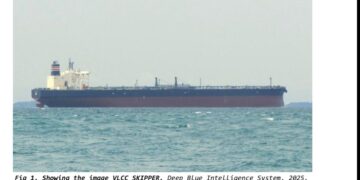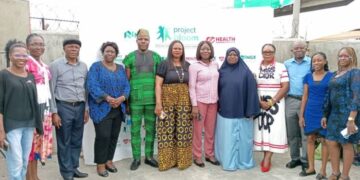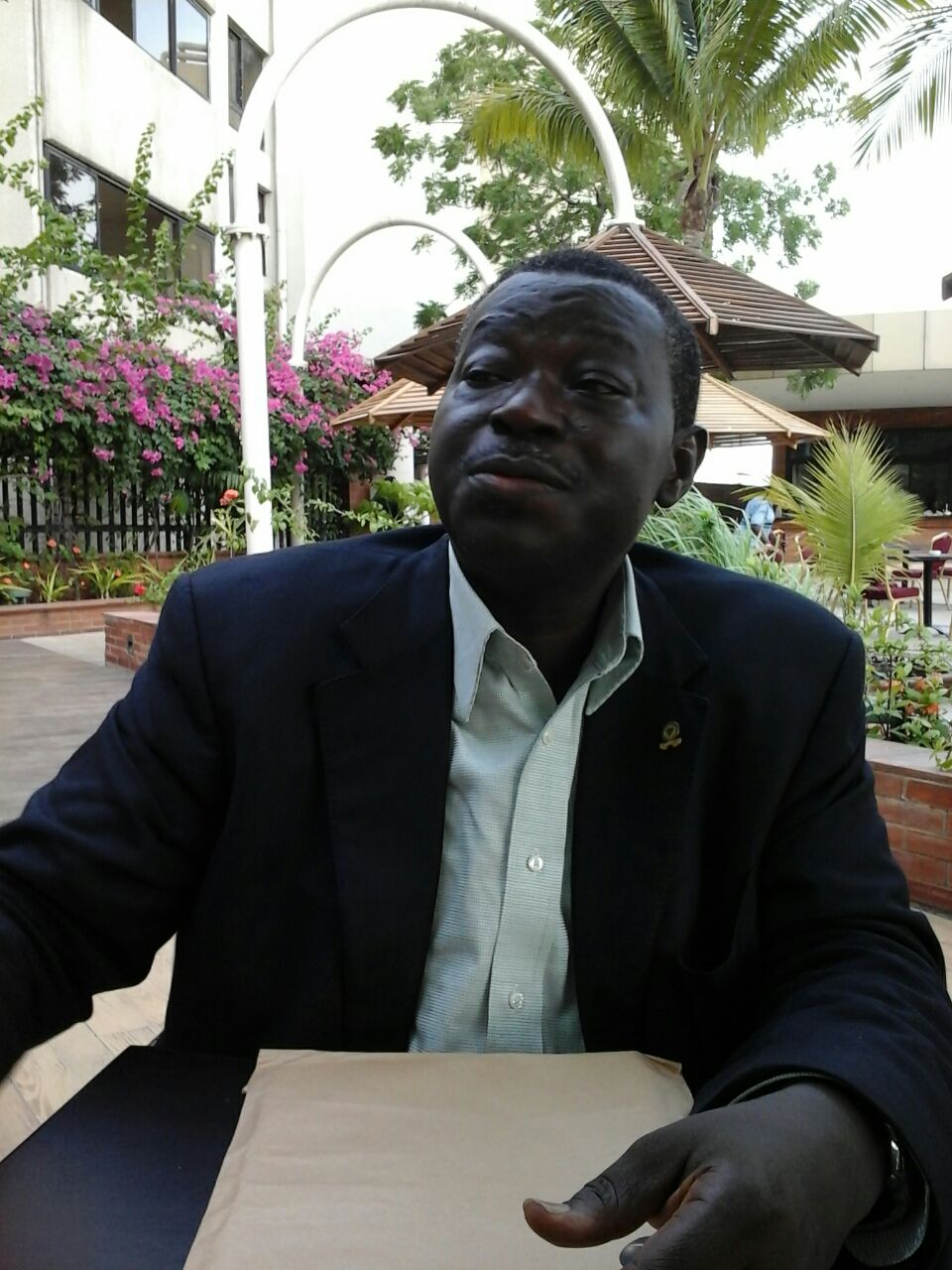Special Interview
A Ship Finance Expert, Sir Peter Olorunfemi has given assurance that the Cabotage Vessel Financing Fund (CVFF) will fulfill its target if it is well managed, and adequate reports made public
to all stakeholders.
to all stakeholders.
Olorunfemi said his confidence hinges on the single digit interest rate for the loan and the long period of repayment, and the fact that contributions toward the fund involves concerned stakeholders who want the success of the project.
He talked on immediate steps to be taken for the implementation of the CVFF and strategies to ensure that indigenous operators be a part of the trade in carrying Nigerian cargoes.
What is your professional advice to government on management of the CVFF now?
Firstly, in terms of inflow, NIMASA can continue to have the inflow, but there must be quarterly report to the ministry on what comes in and how it is disbursed to the bank, and how they approve the loan, although the loan has to go to the ministry of transport for approval.
But if I were the Minister or Director General of NIMASA today, I will ensure that the CVFF is released in the next one month to the banks and let the CVFF account be publicised in some national and maritime publications; what each bank has and what the balance is with them.
With that, the ship-owners will know what money is left where and can go and apply, so that the banks are not encouraged to keep the money. And any bank that is not giving out the loan, if you say the maximum interest rate is seven per cent; they ask them that the balance with them is, they should be paying 10 per cent so long as they are not the ones delaying.
As a matter of urgency, the banks should be increased from four presently to like seven, so that it is not too much of competition, people will not have to move their account from one bank to another because they need CVFF.
But maybe they should give directive for disbursement of the first one they are holding
There is no way you can manage CVFF with all these people without having some people to coordinate. Therefore, they need consultants to coordinate the banks, NIMASA, the applicants and look at their vessels and give your independent report to the Ministry, to NIMASA and to the
bank.
bank.
The report goes to everybody, so that if I say this bank is not giving out loan for this reason, they will read it and can come to defend before the Ministry or NIMASA. This will ensure that what
government wants done is done and clearly so before all parties concerned.
government wants done is done and clearly so before all parties concerned.
Is it possible for CVFF not to suffer the same loss as the Ship Acquisition and Ship Building Fund did?
The CVFF is well made. Everybody was involved in the implementation. There is no reason why the NIMASA will lose money. When you look at the CVFF, it is like what they call ‘esusu,’ a cooperative; when you all join your money together, so it belongs to everybody. The first thing is that if there is any ship-owner who doesn’t pay his own CVFF, his own people will know within the industry, and they can challenge that person.
The 100 per cent of CVFF is made up like this; 15 per cent to be contributed by the ship-owner, 35 per cent by the bank, and then 50 per cent from the CVFF money. And the bank guarantees the NIMASA contribution .
The CVFF has no problem, so long as the bank is still alive. NIMASA does the selection and the bank will then go through their credit approval, after which the bank will inform the CVFF for approval as well. The approval takes a long process, but it is good for everybody. So, the bank has
guaranteed the money, and the CVFF pool has no fear about the money being
returned.
guaranteed the money, and the CVFF pool has no fear about the money being
returned.
After the banks were approved for the CVFF project, they were asked to sign an agreement that if anything happens to the 50 per cent contribution of NIMSA the bank will be held responsible. And that was when NIMASA released the money to the four banks approved to handle the
project. The banks held the fund as holding deposits and not as loans.
project. The banks held the fund as holding deposits and not as loans.
But when you use it for loan, the guarantee is still there, that is, that aspect of NIMASA. So, there is no way the money is lost. When you look at it, the CVFF is supposed to be a maximum of 7 per cent (interest rate plus charges).
There is no way you will take money at 7 per cent and your other colleagues are taking at over 20 per cent that you will operate at same level, because you are already above them.
Even if you are just doing menial jobs, not the main jobs, unless you do not spend the money properly. But again, the bank and NIMASA will keep up with the checks and monitoring on what you are doing, the vessel you are buying.
At that time, we agreed that the maximum years of the vessel to be purchased should not be more than seven years, and the life span of a vessel is about 35 years. Therefore, if you bought a vessel
that is about seven years and you have more 25 years to use the vessel, it is good.
that is about seven years and you have more 25 years to use the vessel, it is good.
You also have a minimum of 10 years to repay the loan. With that, whatever you are doing, you should have the money to pay back because the interest is low and repayment period is quite long. It will also help indigenous ship-owners in doing jobs as waivers cannot be given to foreign companies, but to qualified Nigerian ship-owners who bid for jobs.
So, job is available, money is available, it will help operators do the jobs, and the money will come back. Banks guaranteeing 100 per cent will make them ensure the repayment appropriately.
They will treat it better than their own money. So, CVFF is secured if they follow the laid down procedures.
They will treat it better than their own money. So, CVFF is secured if they follow the laid down procedures.
What fears should they not nurse in disbursing the CVFF?
They should not be afraid that the money will not come back. They should ensure that apart from the Primary Lending Institution (PLI); the bank, apart from the NIMASA, apart from the Ministry, you have a consultant that checks this for you, while they now have time to go and be looking for the vessel, to check that it is working and nothing is missing.
Even, if the vessel has challenges, it is reported to the bank and the bank is able to attend to it.
Even, if the vessel has challenges, it is reported to the bank and the bank is able to attend to it.
Did they put any monitoring system in place to ensure that the operators work with registered ship surveyors who can ascertain the well-being of the vessels?
It is there. If they bring out the agreement between the bank and NIMASA; there must be regular checks of the vessels and there is no way NIMASA will use foreigners to check the vessels when there are Nigerian surveyors who are good at the job, except where Nigerians cannot do it.
What should be done to ensure that there is no repeat of the fund depletion as it was alleged to have happened some time ago?
I do not think that there has been a depletion of the CVFF, because if the money has not been given to the PLIs, it must be somewhere in NIMASA, and if it is not in NIMASA, or that the management has spent the money, the anti-corruption crusade will ensure the money is
located. Maybe, the CVFF money is part of the ones we hear had been mismanaged. So, if it is gotten out it will be returned to the fund, where it is supposed to be because the CVFF does not
belong to NIMASA, it is the ship-owner’s money.
located. Maybe, the CVFF money is part of the ones we hear had been mismanaged. So, if it is gotten out it will be returned to the fund, where it is supposed to be because the CVFF does not
belong to NIMASA, it is the ship-owner’s money.
Shouldn’t the CVFF go directly to the banks instead of through NIMASA first, and that it was part of the money given as grants to some universities?
When I was still in the bank, the CVFF money was always coming to the bank like twice or three times in the year. They pooled the money together and they distribute equally to the banks. During that time, I think they had started giving institutions money. NIMASA has good money that they can give institutions money, and there is nothing wrong for them to give universities that are doing maritime grants.
But it cannot be from CVFF, because it is supposed to be separate from the other inflow that they get. I am sure that by the time reconciliation is done, they should be able to put together the CVFF
money. It is good that the banks have good records of what they got from the CVFF money; Dollars and Naira. Let us even start with what we have, reach our ship-owners.
money. It is good that the banks have good records of what they got from the CVFF money; Dollars and Naira. Let us even start with what we have, reach our ship-owners.
What is causing the delay to disburse even as the banks have done their due process?
As a consultant, I applied to be a consultant for CVFF and was told that I was the best, but at the end of the day they said they couldn’t find my file when I went to meet the former DG. Maybe
they have found the file now, I just hope so. My strongest interest is because I believe that CVFF will solve the problems of ship-owners.
they have found the file now, I just hope so. My strongest interest is because I believe that CVFF will solve the problems of ship-owners.
The monies in the banks is beneficiary to the banks and not ship-owners, because they are trading with the money and nothing is coming back to the industry right?
I won’t say that nothing is coming back to the industry, because before the PLIs were chosen they were funding maritime. The way it works in the bank, you have agric funding and how much is the bank giving to agric? If money come in from agric sector? That means the bank will give more to the agric sector in funding.
Once money comes in from maritime and it is majorly from maritime, the bank will do more for maritime than for other sector borrowing. It is not that the sector is not enjoying anything from the bank, it is just that nobody is controlling the lending rate to this sector. Remember that banks are there to maximise their profit.
From my experience, the banks have funded some industry operators, who have even repaid such loans. At that time, they gave the funds at very good rates until things got tough.
One key thing IOCs say make them not give Nigerians jobs is the quality of their vessels. But you can’t place a Nigerian who uses a second-hand vessel side by side a foreign business operator who uses a brand new vessel to bid for the same job. Do you think we need to enforce the kind of vessel specification for jobs to be given?
Let me just say this, I am not a technical person like an engineer, but the age of vessel does not affect the vessel. What affects the vessel is whether it is in class, whether the dry docking is done as at when due and other things supposed to be done. Once you continue to do that, a 20-year-old vessel is as new as any other one. And a two or three year old vessel is as bad as a 35-year-old vessel if the needful are not done.
It is not only that the Nigerian ships are old, but also that they are not properly maintained and they do not upgrade their vessels. There are certain things that technology has done now that you need to buy into the vessel to operate them. But the reason why the CVFFF has looked at age is because money has been made available and you don’t need to look for old vessels when money is available to buy new ones.
I agree that if the International Oil Companies(IOCs) want to do it, they should with the help of NIMASA. NIMASA should categorise the vessels into category A, B and C, and then, when the IOCs need vessels for their jobs they should first consider vessels in category A, and when there is
no vessel in that category they can then go to the others. That means that all good vessels will get jobs and Nigerians will begin to look for good vessels to buy.
no vessel in that category they can then go to the others. That means that all good vessels will get jobs and Nigerians will begin to look for good vessels to buy.
With the CVFF money being available, other things that NIMASA, CVFF can do is to increase the monies available to ship-owners at a good rate so they can buy their own new vessels. And most of the ship-owners would want to do that so that they can sleep well.
But what will be there, even after buying the new vessel, is maintenance to ensure it goes for dry docking at the right time. Also, the seafarers and crew member are trained. There must be a way that certification will show that the person has been trained.
Things are changing with technology and so are the ships, even the cars we are driving. Some people cannot drive some cars because they are lost due to changes in the car. Also, they should ensure that the changes are done on our vessels.
Then, the IOCs play pranks on Nigerians. They will say Nigerian vessels are not good because they don’t have certain things that the vessel they want to use has.
But there are other things that such vessels may not have, but which are
available in Nigerian-owned vessel. But because they wanted to use that vessel,
they will reject the Nigerian vessel.
But there are other things that such vessels may not have, but which are
available in Nigerian-owned vessel. But because they wanted to use that vessel,
they will reject the Nigerian vessel.
Nigerian vessel should try to be above what they request. However, NIMASA should be able to control the IOCs in that regard. They should be able to ask the IOCs the type of vessels needed in each of the categories and give it to them and NIMASA should release such information to ship-owners that get this specification of vessel in order to qualify for such jobs.





























































